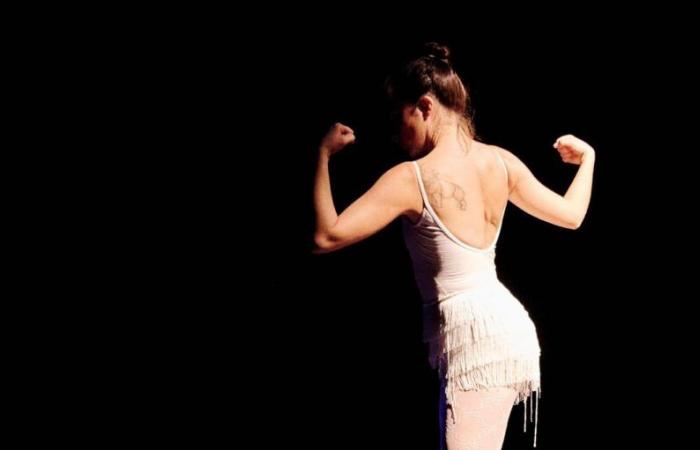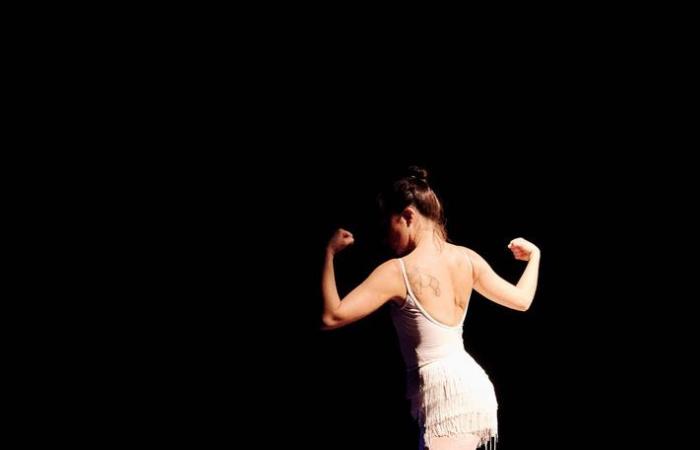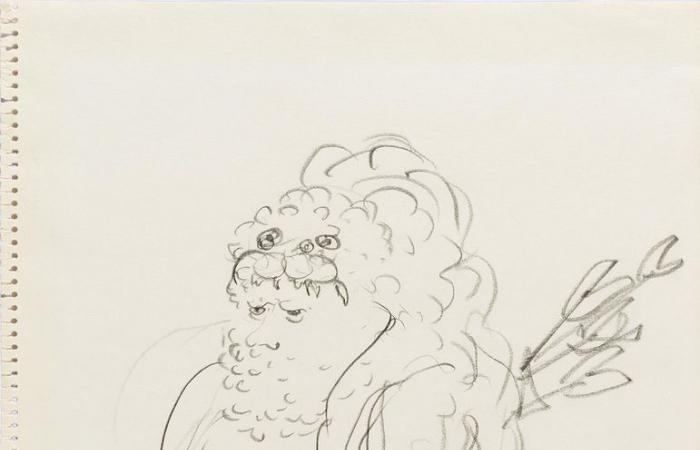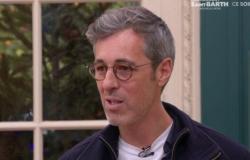ThoseTheater in Lausanne and Geneva –
A satire by Dürrenmatt mocks the flaws of democracy
At Vidy before La Comédie, Giulia Rumasuglia staged “Hercule”, a little-known play by the writer, created in French by Charles Apothéloz for Expo 64.
Published today at 10:27 a.m.
Giulia Rumasuglia revisits Dürrenmatt’s play by making Hercules a woman, played by Lisa Veyrier.
DR
Subscribe now and enjoy the audio playback feature.
BotTalk
- Giulia Rumasuglia revisits Dürrenmatt’s play “Hercules and the Stables of Augias”
- The play, created in Zurich in 1963 and produced a year later in French as part of Expo 64, criticizes Swiss bureaucracy.
- To question the ancient myth, Giulia Rumasuglia transforms Hercules into a woman.
- In 2024, this satire is updated at the Théâtre de Vidy in Lausanne.
In mythology, Hercules is a demigod, celebrated for the feat of the famous twelve labors. Under the sharp pen of Dürrenmattthe hero is tired, riddled with debt. Here he is hired to clean not the stables of Augean, but Elis, a country covered in foul-smelling manure. Very quickly, the son of Zeus was defeated by administrative blockages and parliamentary committees. In the farce, Élide bears a striking resemblance to Switzerland…
Acerbic satire of a chipped democracy, undermined by a Kafkaesque bureaucracy, “Hercules and the Augean Stables” caused a great stir when it premiered at the Schauspielhaus in Zurich in 1963. A year later, the play, translated into French, revealed its biting force to theExpo 64 in Lausanne, in a production by Charles Apothéloz (read framed). Since then, the National Exhibition pavilion has been transformed into the Théâtre de Vidy, under the leadership of the Vaudois director (1922-1982).
Tragic farce
It is within these walls that, sixty years later, Giulia Rumasuglia reactivates the radio version of the play. In this contemporary variation, Hercules becomes a woman (played by Lisa Veyrier). “For me, it was a way of working around the imagination of the figure of Hercules,” describes the director. It allowed me to question the myth, to think about how to empty it and fill this void.”
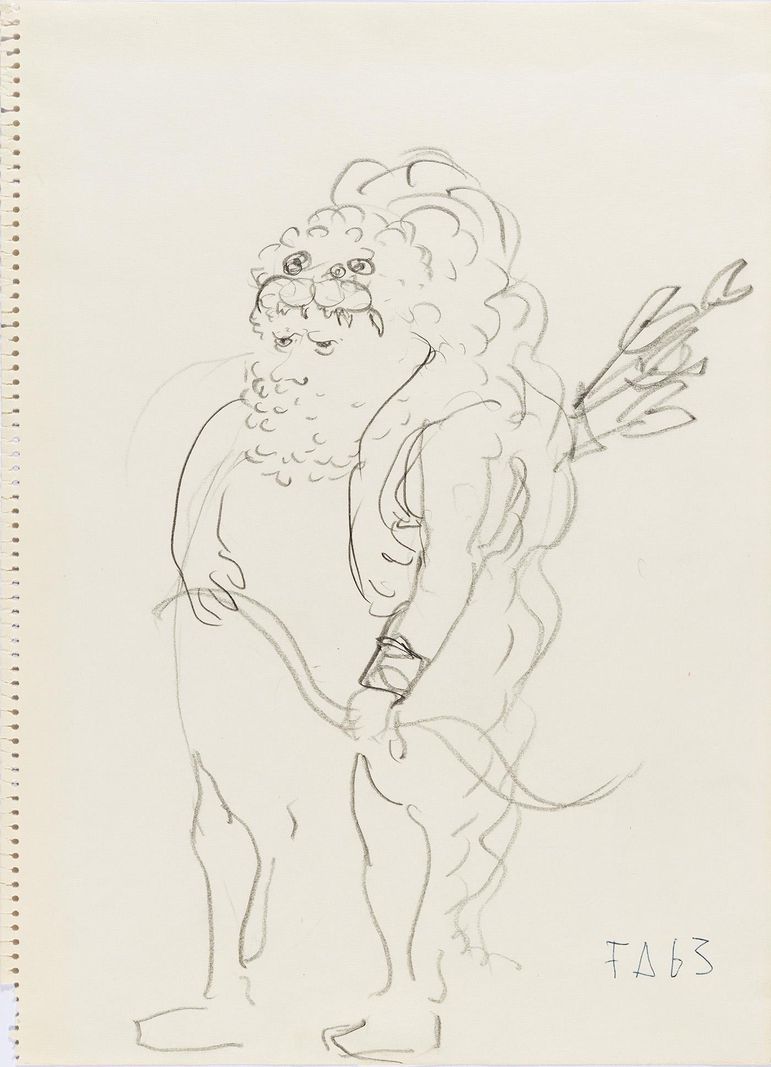
Hercules drawn by Friedrich Dürrenmatt.
© CDN/Swiss Confederation
The hero portrayed by Dürrenmatt is tired, worn out by his own glory. Giulia Rumasuglia questions the images that are projected onto this adored, invincible character, champion of virility. However, at the end of the play, defeated, he finds himself lifting weights in a circus on the verge of bankruptcy. The circus as a mirror of a society that turns in circles on itself. The bitter farce turns tragic.
Smoky speech
“Let’s get down!” In the play, manure symbolizes the paradoxes of prosperity. Abundant livestock and milk production generate smelly manure. In her reading, Giulia Rumasuglia links it to a lack of air. “I was influenced by the essay “Respire”, by Marielle Macé. It evokes our world where breathing has become a social issue. Now, what is stopping us? The smokey speeches.” Another inspiration, Virginie Despentes and her manifesto “Nothing separates me from the shit that surrounds me”. “In this text, she critiques propaganda and appeals to gentleness as a means of escaping fascism.”
Producing “Hercule” in 2024 also means updating a repertoire that resonates many years later. Current themes surface, such as the figure of the foreigner. In Dürrenmatt, Hercules is a broke guy who comes from elsewhere to clean up the dirt in a country that is not his. “We expect him to leave after having done his job.” Sixty years after the creation of the play, the Bernese playwright has lost none of his verve.
Lausanne, Théâtre de Vidy, from November 6 to 23. www.vidy.ch
Charles Apothéloz, Hercules and the Gulliver Poll
When Charles Apothéloz chose the play “Hercules and the Augean Stables” for the 1964 National Exhibition in Lausanne, he was still unaware of the extent to which Friedrich Dürrenmatt’s fiction would resonate with current events. Because, at the time, the director of the French Drama Center (CDR), was leading in parallel an emblematic project, Expo 64, the “Gulliver Survey”.
From 1959, the theater man was charged by the organizers with designing a major ethno-sociological survey with the aim of drawing a portrait of the Swiss. The questionnaire, with eighty questions on themes such as neutrality, abortion or conscientious objection, is submitted to 1,200 people. Stripped down by a computer, the answers serve as material for the game imagined by Charles Apothéloz for the National Exhibition.
In 1964, therefore, the game “A day in Switzerland” invited the public to fill out the questionnaire and slip it into a statue representing the giant Gulliver, designed by the sculptor Jean Monod. Apothéloz’s goal was to collect thousands of responses and compile them to create an overview of the Swiss population. This is where things get tricky… The man of the theater suffers censorship head-on. “It indeed seems that reactionary circles have become frightened by the possible consequences of an investigation of this scale […]analyzes the theater historian Joël Aguet in “Cris et Écrits”, a collection of texts by Apothéloz. This survey risked quantifying the extent of Swiss conformism or, perhaps worse, revealing too strong progressive inclinations.”
It is in this stormy context that the director mounts “Hercules and the Augean Stables”. “It is a good idea,” writes Joël Aguet, “based on Dürrenmatt’s caustic farce, “to pillory the political as well as the mental structures responsible for the painful inertia of the Swiss powers.”
Did you find an error? Please report it to us.
0 comments

